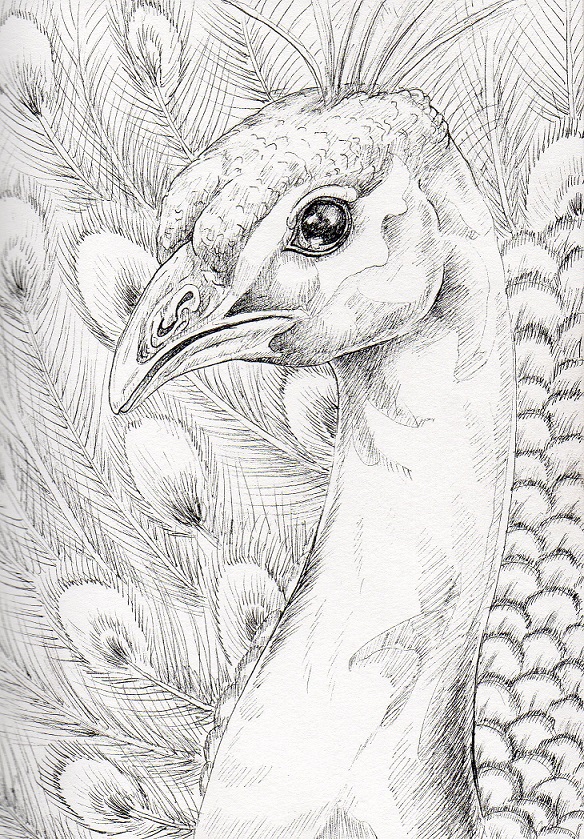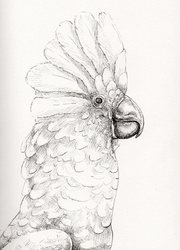Sign In
CloseTotem of the day is Peacock! Speak the truth rather than holding it in for you will have the opportunity to do so soon. Be sure to keep your dignity and grace in tact as you do so. Although it will be important to speak your mind, know that action is not entirely necessary. Observing and watching your environment will be an important behavior as well. Don't worry about not taking action for you are protected. There will be a vision coming to you that could change the direction you are going in your life in a dramatic way. So listen carefully. The Peacock spirit guide is known for it's connection to nobility, holiness, beauty, protection, observation, and integrity. Peacock reminds us that when we show our true selves we achieve the greatest beauty and power. This guide helps greatly when dealing with feelings of insecurity or low motivation by reminding us we simply need to stand tall and walk with dignity. The phoenix is comprised of many animals, including the peacock which connects it with the ideas of illumination, rejuvenation, and rebirth. In Hinduism, the peacock is connected with the deity Lakshmi who represents patience, compassion, good luck, and benevolence. In Asian spirituality, the peacock is connected with Kwan-yin who was a symbol of love, good-will, and kind-heartedness. In Greco-roman tales, the peacock was created by Hera out of the giant Argus whose hundred eyes became the eyes of the peacock's tail feathers and symbolized the vault of heaven and the eyes of the stars. People who are connected with Peacock are always protected and often lucky which helps them to avoid unforeseen mishaps. These individuals often enjoy colorful clothing and creating a display out of themselves. Even so, they possess a deep knowledge within themselves and move with a regal, confident energy that works to warm those around them.
Peacock, Pavo Cristatus, are omnivorous birds that can live up to 20 years in the wild. The proper name of these birds is Peafowl with peacock being given to the males and the female being known as a peahen. Three species of Peafowl exist: the Indian peafowl found throughout India, Sri Lanka, and Pakistan; the green Peafowl of Java, Indochina, and Myanmar; and the Congo Peafowl found only in the Congo Basin. The long, iconic tail feathers are found only in the Green and Indian peafowl. Studies suggest that the use of these extravagant tales is to attract females with more recent studies revealing that it is also a sign of a male's health. It is healthy males who have the ability to grow and maintain such large feathers while those in illness or lack of health would not be able to grow such bright, large feathers. The average adult peafowl grows to approximately 42 inches in length, a weight of around 13 lbs, and a wing span of approximately 118 inches. The long tail feathers of the male peacock can grow to up to an impressive 6 feet long. The closest relative of the peafowl is the pheasant, although pheasants are known to live throughout the Northern Hemisphere while peafowl can only be found in warmer climates of the Southern Hemisphere. With a preference for these warmer climates, peafowl are generally found in dry savanna or desert areas. they can also be found in denser foliage such as forests during breeding season when incubating eggs and hiding offspring is necessary. The diet of a peafowl consists of primarily flower petals, seeds, and plants as well as insects, reptiles, and amphibians. Foraging by rifling through leaf litter during dawn or dusk, peafowl will eat nearly anything they can fit into their beak. This includes insects such as crickets or termites to small mammals or snakes. Peafowl found in domestication will also consume grains, bread, cheese, or even cat food. During the hottest parts of the day, these birds will rest in the shade. Although they may nest on the ground, they will prefer to roost up in trees. The long tail, or train, of a peafowl is generally seen only in the male of the species. The green peafowl differs in that the female is not the dull grey or browns of the Indian peafowl, but only slightly less iridescent than the male with a slightly shorter tail and more coppery colored neck. These trains are used both as displays to attract a mate as well as to signal danger, ward off competition, and shock predators into retreating. The bright iridescence of their feathers is actually caused by the angle light shines onto the mix of colors rather than the actual pigments of the feathers. Peafowl are also known for their loud call which is used by peacocks to attract peahens. It is suggested that the singing they produce during breeding season is used to impress females by it's intricacy. Peafowl are known to practice polygamy with the peacock taking up to six different females. Each female will lay between 4 and 8 brown eggs which are hatched after approximately a month of incubation. After hatching, the offspring, called peachicks, are reared by the mother until they reach maturity.
Submission Information
- Views:
- 591
- Comments:
- 0
- Favorites:
- 2
- Rating:
- General
- Category:
- Visual / Traditional




